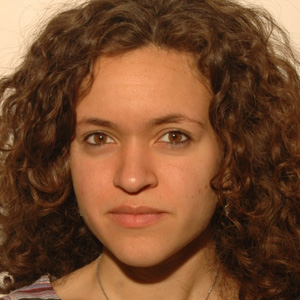by Mennat-Allah El Dorry
We all know that Herodotus said that “Egypt is the gift of the Nile,” but not all of us understand the extent of truth in this quote. Without the Nile, ancient Egypt civilisation would not have existed in the same way that it has. The lasting supply of water and the predictable annual floods brought about agricultural security. The people of ancient Egypt were not at risk as their neighbours in Mesopotamia who lived under the constant threat of the unpredictable and destructive floods that swept their lands and lives. The Egyptians planned their harvesting according to the Nile calendar, and spent their time developing a complex culture, rather than rebuilding what was swept away by the floods like their neighbours did.
One of the biggest achievements of the Ancient Egyptians was developing a full-fledged language. As early as 3000 B.C. Hieroglyphs – meaning sacred carving - appeared. It belongs to the family of Afro-Asiatic languages, relating it to Asiatic (Semitic) languages like Arabic and Hebrew, and to North African (Hamitic) languages like Berber. It remained in use until the eleventh century AD, making it the longest continually attested language in the world with a 4000 year lifespan. However, it did not remain unchanged through its lifetime. Ancient Egyptian started out as what scholars call Old Egyptian, which lasted from about 2600 BC to 2100 BC. Middle Egyptian, often called Classical Egyptian, started around 2100 BC, and remained the standard written hieroglyphic language for the rest of the ancient Egyptian history, but was only spoken for 500 years or so. After 1600 BC, Late Egyptian began to replace Middle Egyptian as a spoken language. Though a descent of earlier phases, its grammar and some vocabulary had changed substantially. Late Egyptian gave birth to Demotic, which spanned form 650 BC until around the fifth century AD. Demotic developed into Coptic.
Contrary to what many people believe, that the Coptic language is a Biblical language that stands on its own, it is actually just another development of ancient Egyptian. Coptic was used from the first century AD and was spoken for perhaps a thousand or so years after that. It now only survives as a spoken language during some of the masses of the Egyptian Coptic Orthodox Church. Coptic has somewhat guided modern scholars in the matters of pronunciation of hieroglyphs. This transcendence is a vast topic, which I promise to talk about soon. Sadly, Coptic is gradually being replaced by Arabic, threatening the loss of the final stage of the ancient Egyptian language. Much of the Coptic language, both grammar and vocabulary, has carried though to the modern colloquial Egyptian language.
Getting the gist of Hieroglyphs is not easy, but once you get through the initial confusion, it gets better. Each sign does not necessarily stand for one letter/sound, but often it is a bilateral, standing for two letters/sounds, or a trilateral, standing for 3 letters/sounds. It can also stand for a whole word. Usually words will also be accompanied by a determinative. The word for house “pr” is written using the letters p and r, followed by the drawing of a house is added as a determinative at the end of the word to make sure that the reader knows what they are talking about.
When learning Hieroglyphs (affectionately called “glyphs” by modern students) we start with Middle Egyptian, which is the clearest and least complicated script and grammar, which is then followed by the more complex Late Egyptian. From my experience, they are all just as complex. I hauled myself through 4 semesters of hieroglyphs, barely making it alive. After all, as one great person once said
Ancient Egyptian is a language as dead as can be.
It killed the ancient Egyptians, and now it’s killing me
Till next month happy holidays J
Introduction to the Ancient Egyptian Language
بقلم: منة الله الدري - في: الأحد 5 نوفمبر 2017 - التصنيف: علم المصريات
فعاليات

العربية السعيدة في بيت يكن
إبريل 15, 2025
العربية السعيدة، لتوركل هانسن وترجمة سوسن كردوش قس...

الأديب: رؤية ومسيرة ... حوار مع إيلان بابيه عبر زووم
مارس 15, 2025
تمت هذه الحلقة في 15 مارس 2025 ، تستطيع الان مشاهد...

مسافر يبحث عن ماء
فبراير 17, 2025
تقيم نقابة اتحاد كتاب مصرشعبة أدب الرحلات تحت رعاي...

مناقشة رواية النباتية لهان كانج الحاصلة على جائزة نوبل للأدب
نوفمبر 08, 2024
تمت منااقشة رواية النباتية يوم الجمعة 8 نوفمبر 202...
